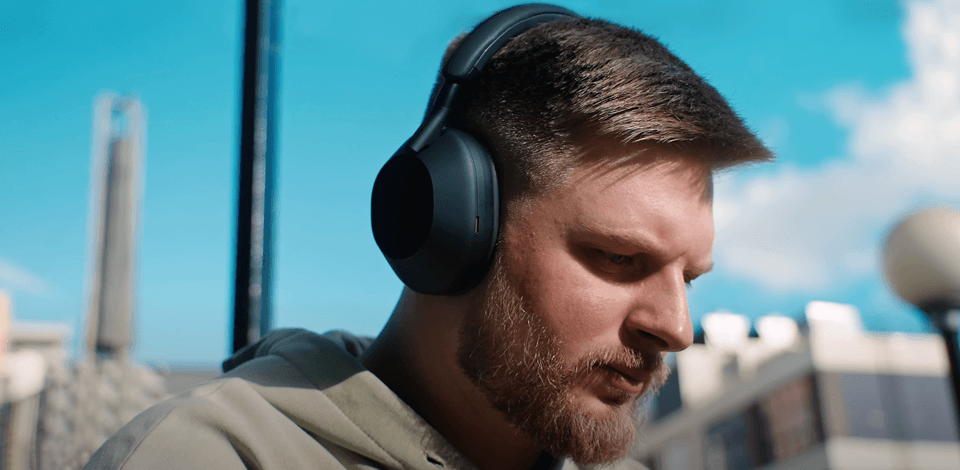
Picking the best headphones for large heads can be very challenging. If you have a slightly bigger head, most headsets can apply too much pressure and feel uncomfortable, which becomes noticeable if you wear them for hours. If your headphones don’t offer a proper fit, it can ruin your mood and turn a productive day into an irritating one, regardless of how good the audio is.
When trying out different headphones for large heads, I prioritized models with customizable earcups, a lightweight build, and a gentler fit that puts a premium on comfort. My job has me listening to dozens of podcasts, reviewing songs, and editing videos, which is why the quality of my headphones needs to be top-tier.
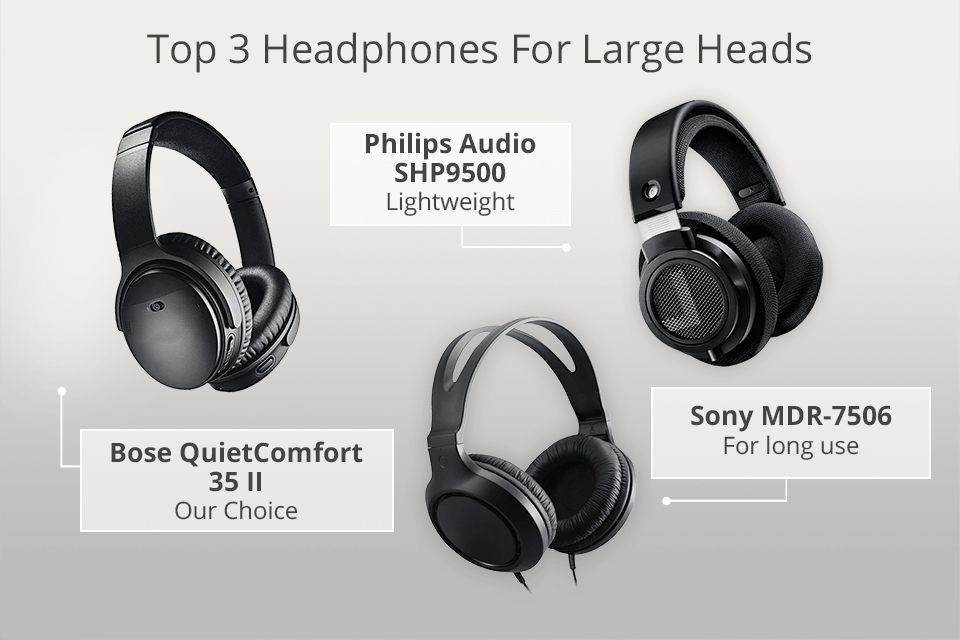
Based on my own experience and the insights shared by my colleagues, I determined which aspects define the comfort level of different headphones the most. I’ve put together an overview of high-quality headphones that offer fantastic audio quality, dependable sturdiness, and the level of convenience expected by people with bigger head sizes.
I gathered users’ feedback, researched reliable online reviews, and tested 30+ headphones for large heads to make sure they’ll meet the expectations of both regular users and professionals like me.
![]() Bose QuietComfort 35 II
Bose QuietComfort 35 II
★★★★★ (5/5)
Bose QuietComfort 35 II has provided the most satisfying user experience out of all the headphones I’ve tried. They sound great, offer a comfortable fit, and have terrific noise cancellation.
|
Amazon:
|
10K+ sold last month
|
|
B&H:
|
400K+ sold last year
|
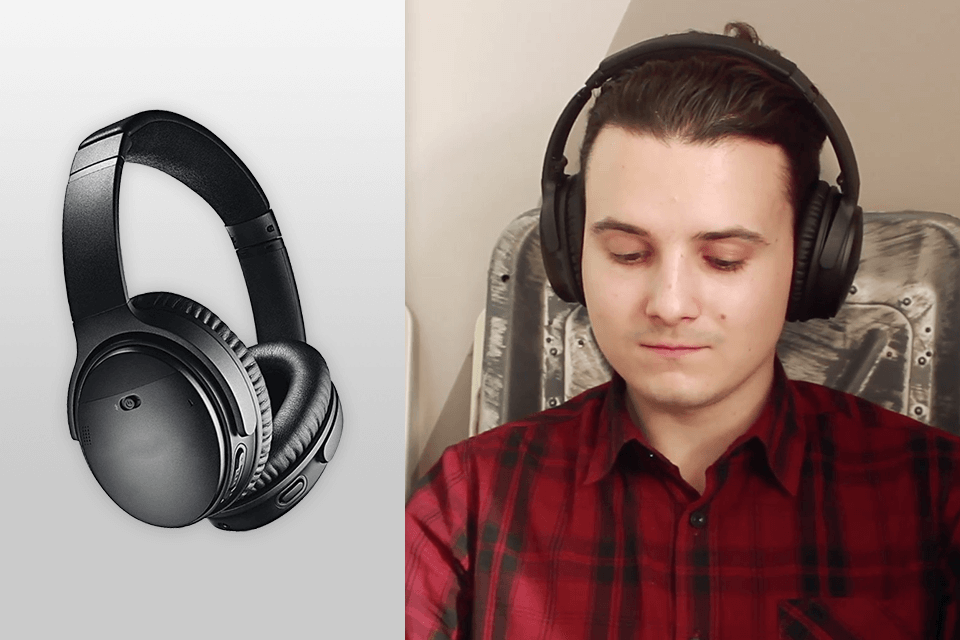
Once I first got my hands on the Bose QuietComfort 35 II oversize headphones, I immediately wanted to learn how well-suited they are for various environments. For my work, I frequently have to find the optimal balance between audio quality and noise cancellation, and this model offered just want I was looking for.
I wore them outdoors, both in a quiet park and in a bustling street, and the noise cancellation allowed me to enjoy an immersive experience, providing the necessary focus for making calls or listening to music. The QuietComfort 35 II has proven to be just as efficient for my work, delivering clean, latency-free sound during my video calls and editing sessions.
While they might be on the higher end of the price scale, I believe they are the best over-ear headphones for big heads when it comes to value for money. They offer dependable, clean sound and efficient noise cancellation regardless of where you’re using them.
|
Amazon:
|
300+ sold last month
|
|
Philips:
|
20K+ sold last year
|
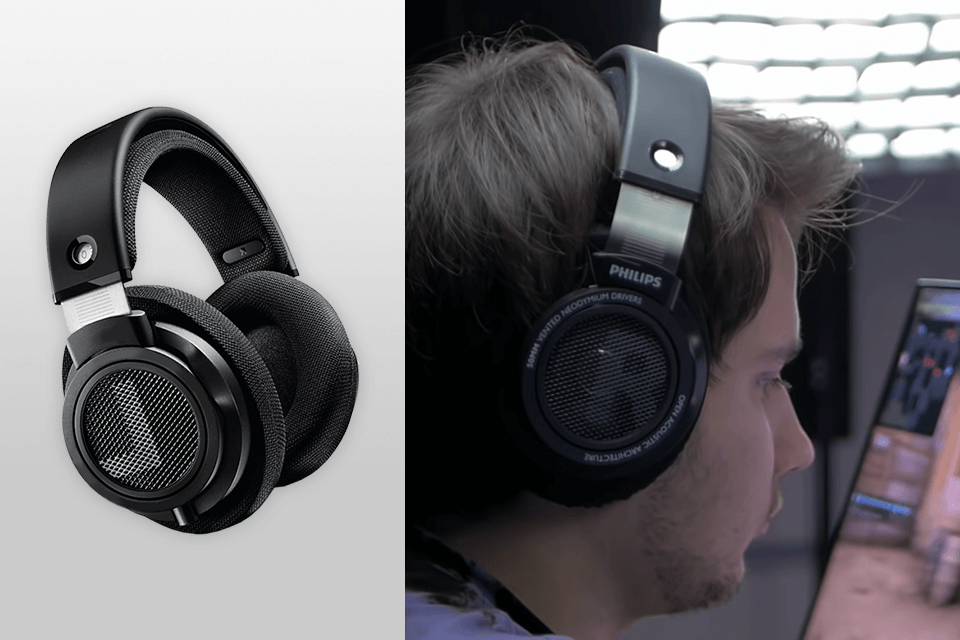
I stumbled upon these headphones for big heads in a nearby store and was instantly impressed by their sound after pairing them with my phone. I had no trouble putting them on and didn’t feel any uncomfortable pressure on my head.
The Philips SHP9500 provides a snuggly fit while remaining lightweight. The adjustable headbands accommodated the shape of my head while the earcups comfortably covered my ears, enabling the open-back design to produce a natural, spacious sound that was pure joy to listen to.
The audio quality is consistently high – clean, balanced highs and a solid midrange, particularly considering the lower price. They offer a deep sound that allows you to fully immerse yourself in the music you’re listening.
However, after testing these headphones for a couple of days, I started noticing some flaws. That said, the open-back build of the SHP9500 makes them prone to sound leakage, which is especially noticeable when using them in public environments that have a lot of external noise.
|
Amazon:
|
1K+ sold last month
|
|
B&H:
|
15K+ sold last year
|
|
Adorama:
|
10K+ sold last year
|
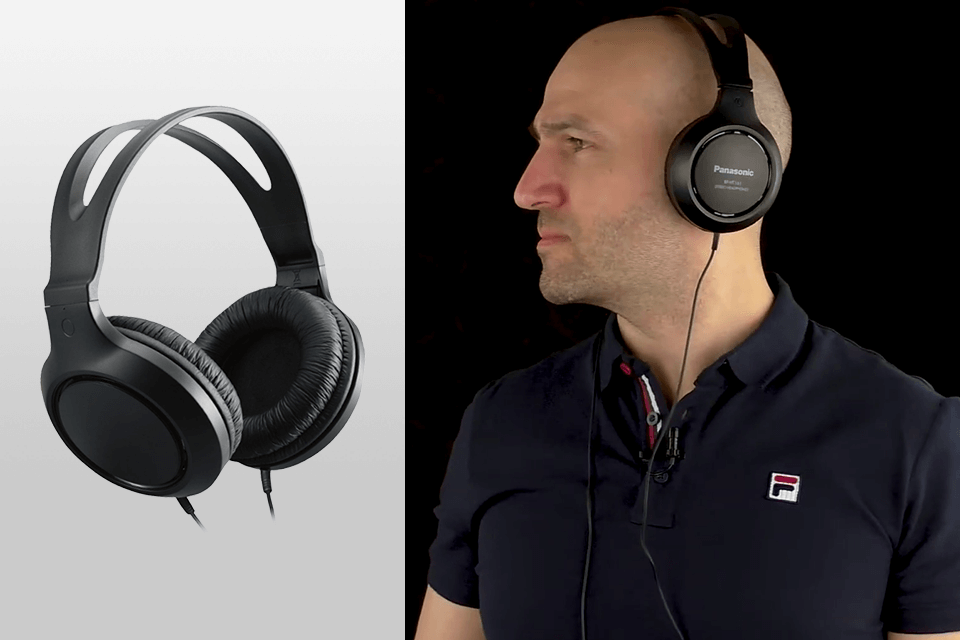
There’s a pair of Panasonic RP-HT161M large headphones in our workspace, and a coworker of mine, Alex, has been using them for several months now. He dedicates a lot of his work time to editing videos and has consistently praised this model for its audio quality and affordability, stating that they’re one of the best headphones under $50 you can find.
Alex’s favorite aspect of these headphones is how comfortable they are. He can wear them for half a workday without feeling irritated or fatigued thanks to the appropriate size and padded earcups.
My colleague also appreciates their lightweight build that enables him to move around unencumbered. Even though these headphones don’t offer a wireless connectivity option, the cord length of about 6.5ft provides you with a lot of breathing room and lets you get up from your desk without taking them off.
The biggest criticism Alex has is the build quality. Despite being comfortable to wear, the plastic used for manufacturing feels fragile, particularly when compared to some other headphones for big heads from this list. He’s afraid that daily use will eventually lead to the headband breaking or becoming too loose.
|
Amazon:
|
300+ sold last month
|
|
B&H:
|
2K+ sold last year
|
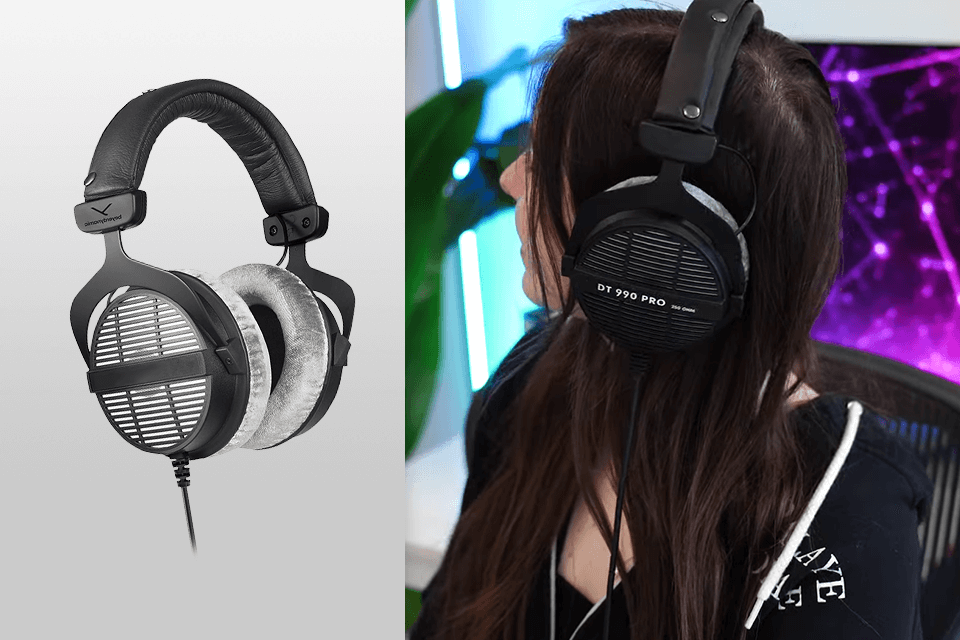
As I was browsing through different bulky headphones, I checked out what users on YouTube were recommending, and I kept hearing about the Beyerdynamic DT 990 Pro. Having tested them for some time, I grew to appreciate them as well and consider them to be among the best headphones under $300 available today.
This model has soft velour earpads that provide a tight fit without feeling uncomfortable, and I can adjust the headband to match my bigger head size. The delivered audio is clean and deep, even at larger volumes, which is a testament to the drivers’ quality.
I should note, though, that these are probably the biggest headphones I’ve tried, so if you’re looking for a portable option, you should consider other models. Additionally, even though the 3-meter cable is perfect for a dynamic studio environment, it can make it inconvenient to move around with the headphones and also makes storage more difficult.
|
Amazon:
|
100+ sold last month
|
|
B&H:
|
7K+ sold last year
|
|
Adorama:
|
4K+ sold last year
|
|
Best Buy:
|
3K+ sold last year
|
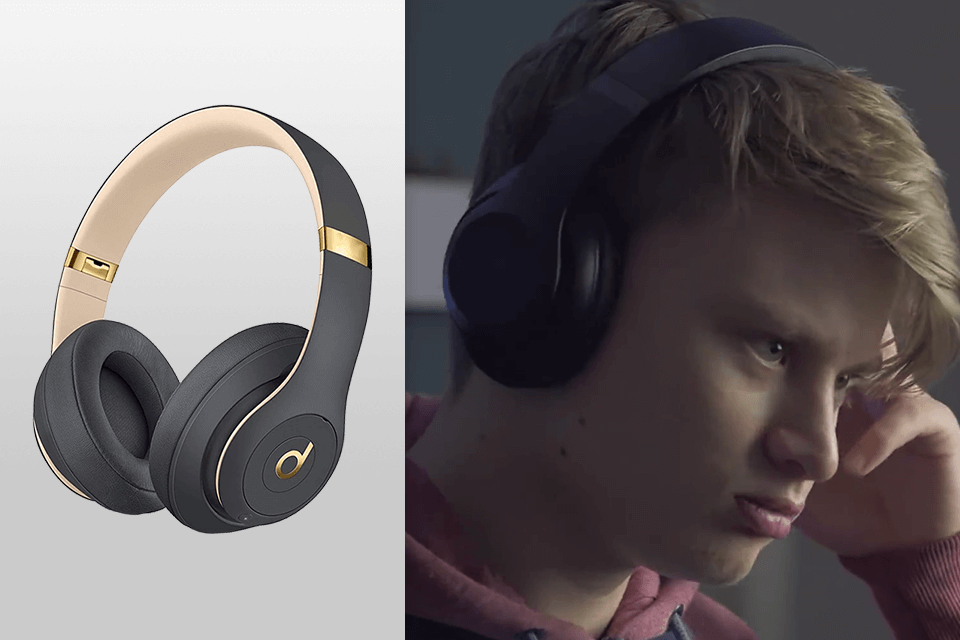
As I was looking at different headphones for large heads in a tech shop, one of the consultants quickly evaluated the size of my head and suggested the Beats Studio3 Wireless. They also inquired if I work in the music creation field, as this model is frequently listed among the best headphones for music production.
I thought they were simply promoting their product, but after wearing these headphones for a bit, I grew to appreciate their snug fit. The audio quality is top-notch, delivering deep bass and clean mids regardless of which music genre I listened to. The available noise cancellation is highly efficient at fading out any background chatter, even when surrounded by people or vehicles.
The Studio3 Wireless is also a great pick for casual users who want a pair of dependable headphones to use on the go. However, I was a bit taken aback by how expensive this model is compared to alternative products in the same category. Even though its audio quality is terrific, more budget-conscious users might want to look elsewhere.
|
Amazon:
|
100+ sold last month
|
|
B&H:
|
5K+ sold last year
|
|
Best Buy:
|
2K+ sold last year
|
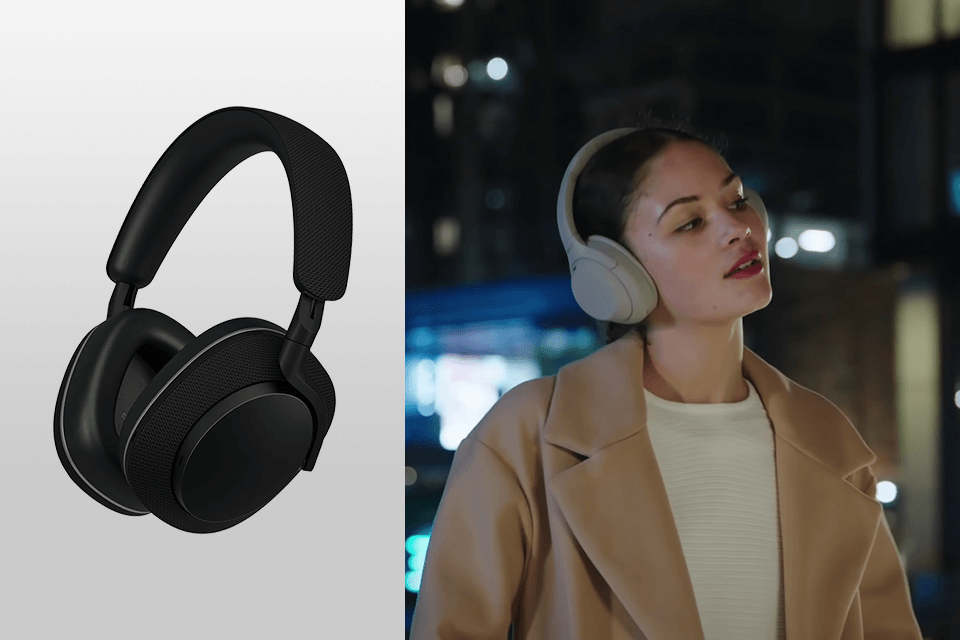
The Bowers & Wilkins Px7 are probably one of the most popular gaming headphones for big heads that are also widely used by YouTubers, social media influencers, and regular people who want to listen to music. It provides fantastic audio quality, producing clean highs and deep bass, which is why both in-game sound and music feel so rich and immersive.
I asked a video game streamer what they thought about this model, and they stated that the Px7 is the best PS5 headset for big heads if you value both comfort and audio quality. The adjustable headband provides a tight fit, while the soft memory foam earcups make sure your ears feel comfortable despite the secure sealing.
However, they also admitted that the headset can feel a bit too heavy to wear constantly after 4-6 hours of use, so keep that in mind.
|
Amazon:
|
300+ sold last month
|
|
B&H:
|
14K+ sold last year
|
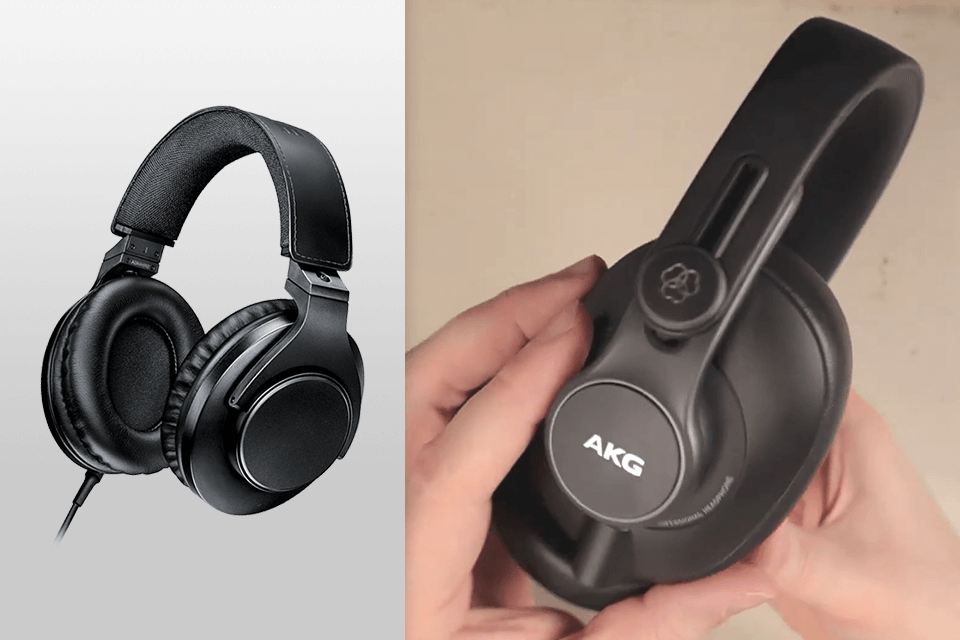
I was visiting my relatives during the holiday season, and I noticed one of them wearing an impressive set of wide headphones, which turned out to be the Shure SRH440A. My cousin was gracious enough to allow me to test them.
The audio quality is top-tier, delivering balanced mids and clean vocals, which makes them perfect if you mostly consume a lot of podcasts and music. They’re also probably the biggest over-ear headphones I’ve tried, providing a broad soundstage and immersing me in the music like few other models can.
I didn’t feel any fatigue even after wearing them for hours, and the snuggly earcups are great at cancelling out external noises. My biggest issue with this model is the cable length, which makes it inconvenient to use these headphones on the go or pack them for your travels.
Once my FixThePhoto team and I began trying out different headsets for big heads, we all agreed that comfort was the key deciding factor. We dedicated about a week to testing each option featured on this list, both in our studio and, when possible, outdoors. Our testing helped us determine the most important factors that people with bigger heads need to pay attention to:
Comfort and fit. If you have a larger head, finding a headset that feels comfortable to wear is paramount. You should prioritize adjustable headbands made of durable, soft materials that don’t apply unwanted pressure to your head. Options like the Bose and Sony usually satisfy this requirement and feel convenient to wear even after an entire workday.
Ear cup size. Bigger earcups are essential for providing comfort since they provide the necessary ear coverage without pressing into your head. Over-ear headphones are generally better suited for larger heads since they cover more space and are better at producing immersive sound. Even though more compact, on-ear options can fit your head too, they won’t feel as convenient to wear for hours on end.
Noise isolation and sound leakage. If you’re working in a loud space, noise cancellation is a must. Over-ear headphones typically provide superior isolation, but you also have to ensure your headset doesn’t leak sound, particularly if you’re not alone at your workplace. While active noise cancellation is the best option, even simple passive sound isolation can already do wonders.
Battery life and wireless connectivity. Battery life is a very important characteristic for wireless headphones, with 30-40 hours being the optimal duration for lengthy sessions. WiFi and Bluetooth connectivity make it easy to pair such headphones with your device. If you’re interested in a wired model, consider choosing one with a detachable cable to give yourself more freedom of movement.
Durability. Prioritize headsets for large heads that were made to last. Metal or premium plastic headbands and durable earcups will ensure you can use the headphones for years to come. Comfort is necessary, but durability is what ensures you don’t regret spending your money in the long term. We tried models with reinforced cables and sturdy hinges, and they served us a lot longer.
Yes, there are plenty of models that provide sufficient space around the ears and can be worn alongside your glasses. Prioritize headsets with plush earcups that won’t apply pressure to the glass frames.
Study the adjustable range of the headband and the earcup size. A headband that can stretch wide enough should fit your head comfortably while also preferably offering a bit of padding to make your listening experience even more convenient.
Not always. The audio quality is largely determined by the drivers, audio tuning, and materials. That said, over-ear headphones usually offer superior sound isolation, making the listening experience more immersive.
Typically, headphones designed for larger heads cost a bit more because of the extra materials and adjustability. Thankfully, you can still buy an affordable model that offers the desired level of comfort and audio quality.
For sports, you need to ensure the headset offers a tight, stable fit. Prioritize options with adjustable, secure headbands and sweat-resistant properties. Over-ear headphones for large heads might feel more convenient to wear, but on-ear or wireless models are usually more practical for exercise.